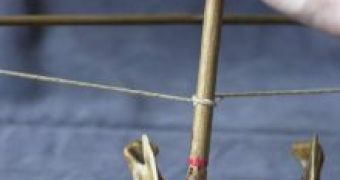"Here we describe eleven drilled molar crowns from nine adults discovered in a Neolithic graveyard in Pakistan that dates from 7,500-9,000 years ago. These findings provide evidence for a long tradition of a type of proto-dentistry in an early farming culture," write Alfredo Coppa and colleagues in a paper published by Nature.
The teeth belong to four females, two males and three individuals of unidentified gender. They show signs of "palliative" drillings, one unfortunate individual having endured three such operations on different teeth and another one having the same tooth drilled twice. According to researchers, this dental work has probably been done to ease pain, since four of the teeth showed signs of decay and the jaw of at least one individual showed signs of massive infection. Moreover, the operation was conducted on molars deep inside the mouth, so it is unlikely it had any decorative purposes. The authors speculate that maybe some filling was also used:
"The perforations exposed sensitive tooth structure, so some type of filling may have been placed in the cavity; however, no evidence survives to confirm this."
According to one team member, Roberto Macchiarelli from the Universite de Poitiers in France, the procedure must have been incredibly painful: "The extent and depth of the drilling would have produced horrible pain. These people took the capability of facing pain to another level," he told LiveScience.
The holes ranged from about 1 to 3 millimeters in diameter and were about 0.5 to 3.5 millimeters deep. Scientists wondered for how long the patients had to resist. To find out they reconstructed the tool and found they could create similar holes in less than a minute:
"At Neolithic Mehrgarh, flint drill heads occur in the lithic assemblages associated with beads of bone, steatite, shell, calcite, turquoise, lapis lazuli and carnelian. Using models of these drill tips, we reconstructed a method for drilling based on the ethnographic literature and found that a bow-drill tipped with a flint head required less than one minute to produce similar holes in human enamel."
This should have been one long minute.
Photo credit: Flint-tipped drill reconstructed a by researchers (Roberto Macchiarelli, Universit? de Poitiers)

 14 DAY TRIAL //
14 DAY TRIAL //